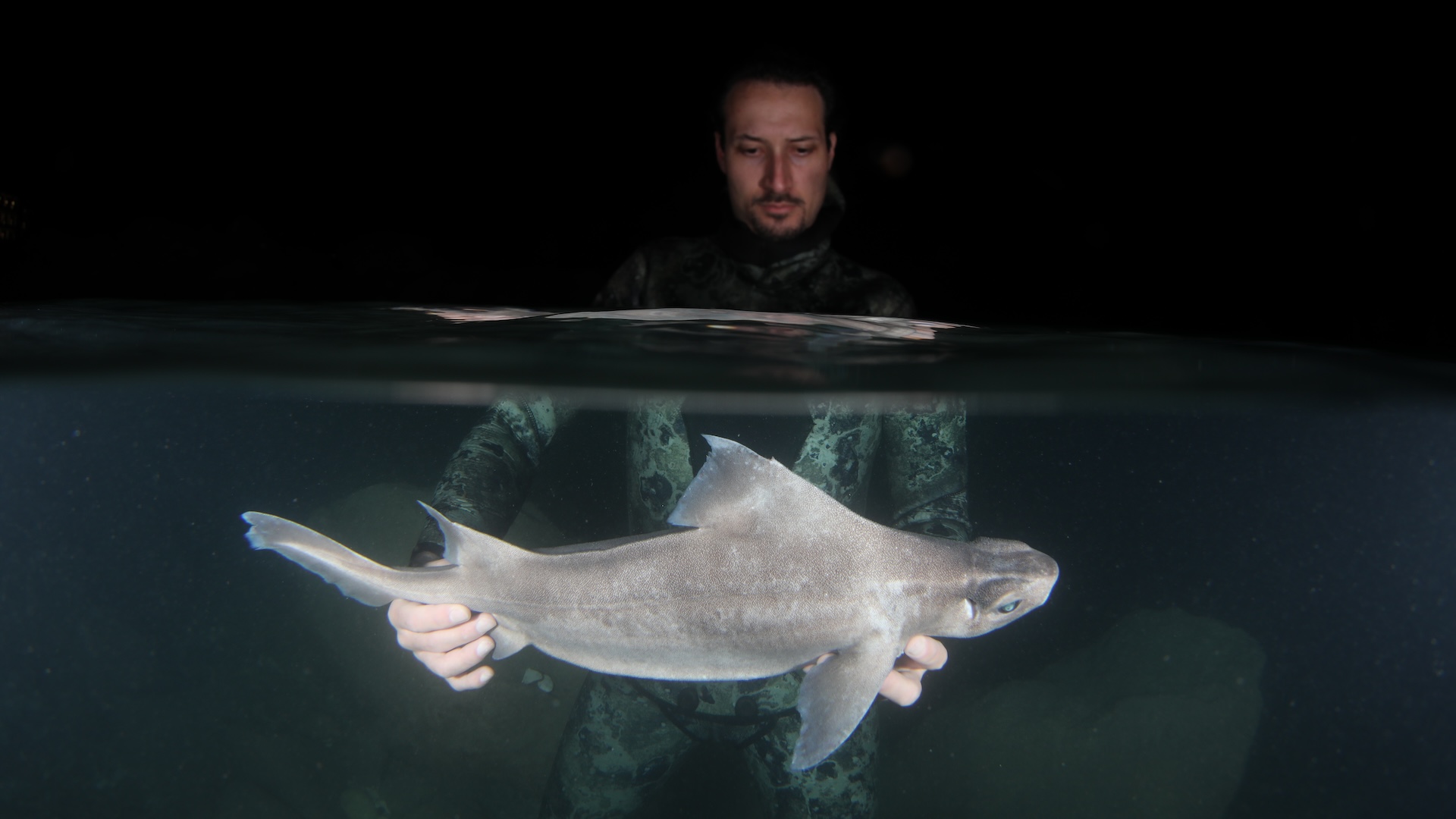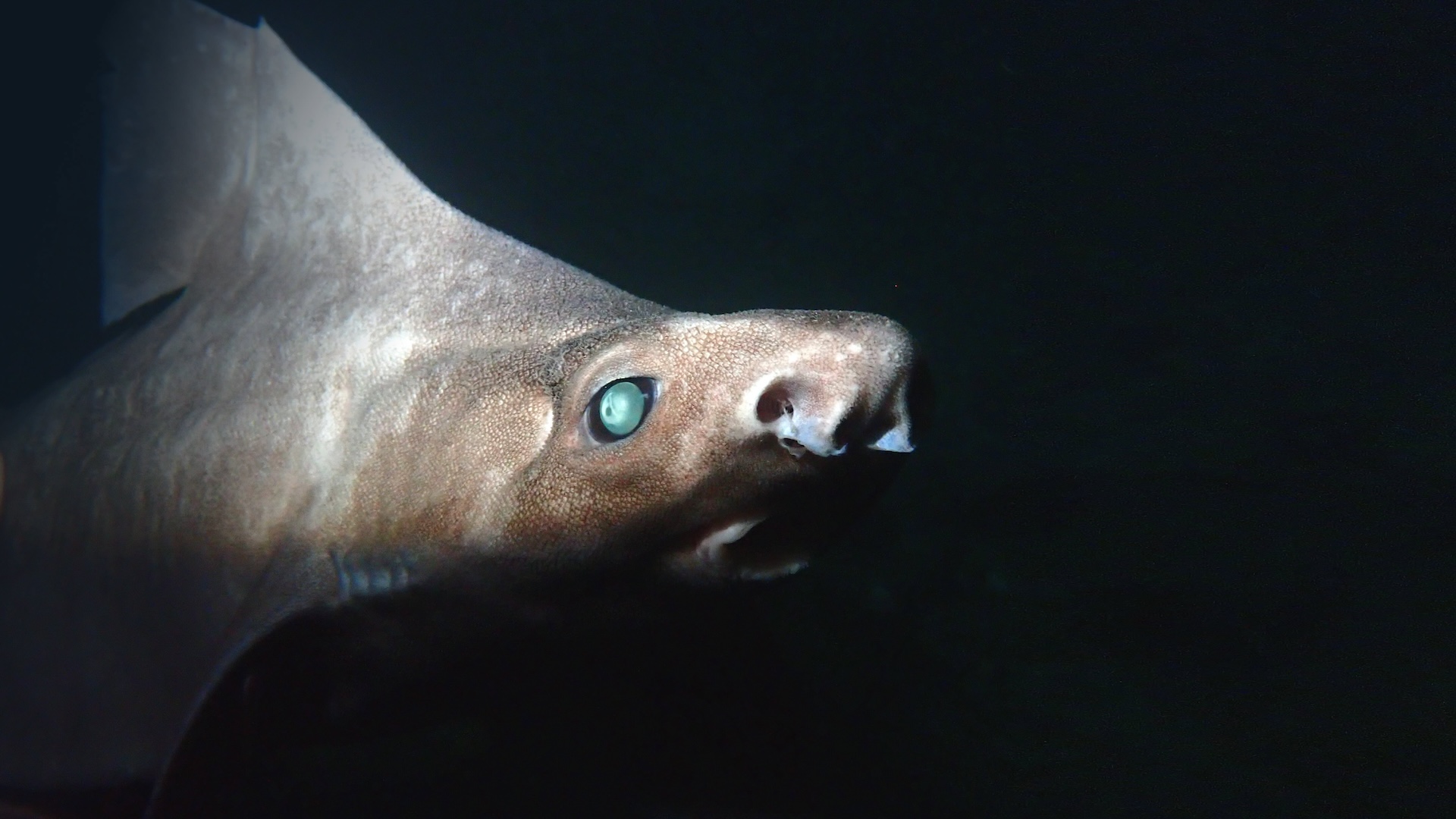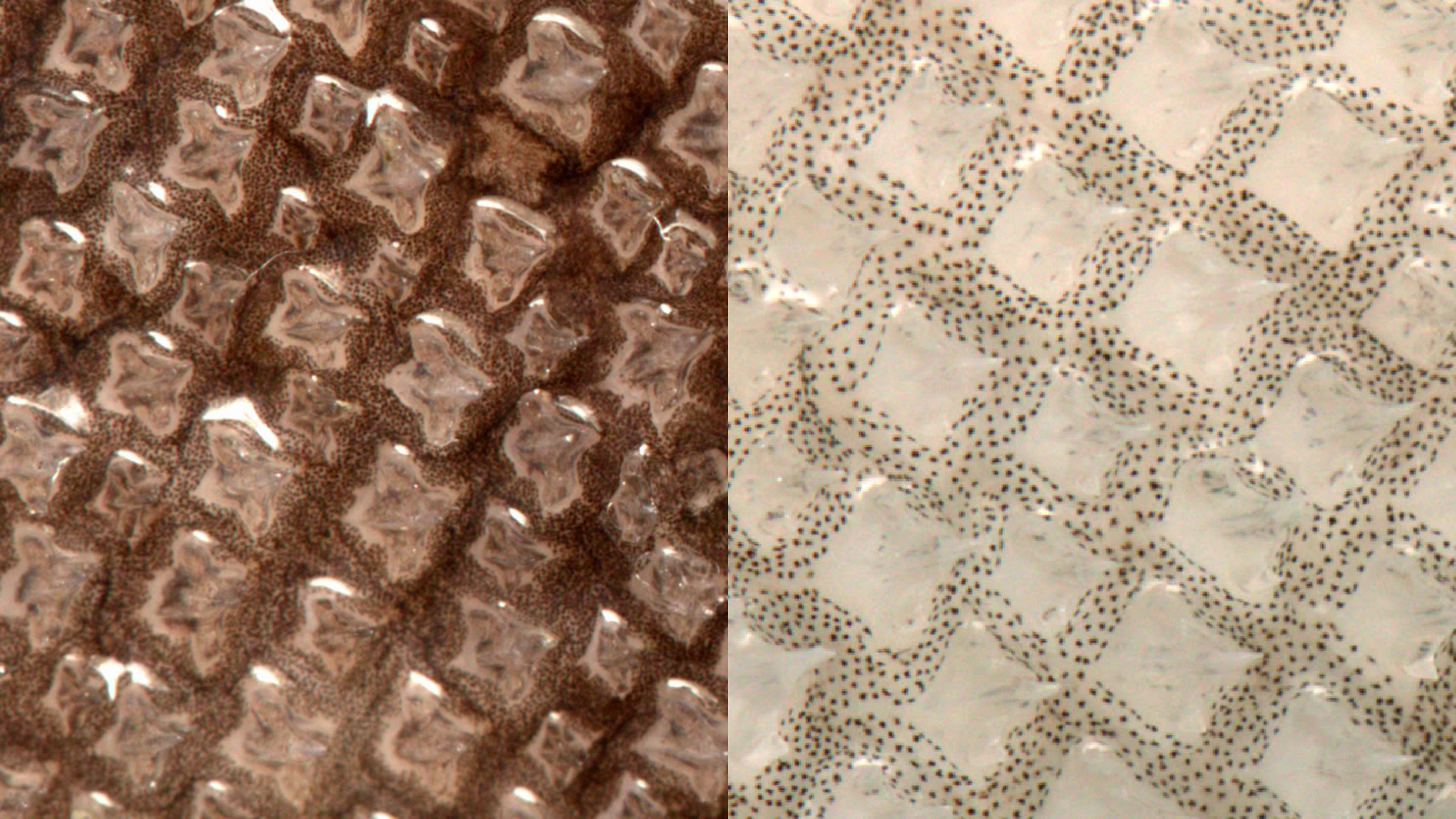Incredibly rare, ghostly white shark discovered off Albania
A ghostly white angular roughshark found near Sazan Island, Albania, is the first example of leucism ever recorded in the species.

A ghostly white deep-sea shark has been discovered off the coast of Albania.
The critically endangered angular roughshark (Oxynotus centrina) was caught by a commercial trawler off Sazan Island — an uninhabited military island — at a depth of around 656 feet (200 meters).
The shark is the first of its species to be discovered with leucism, a genetic disorder that disrupts melanin production, causing a reduction in pigmentation, scientists report in a new study. Unlike albinism, in which animals completely lack melanin and have red irises, leucistic sharks have normal iris pigmentation even if they appear completely white.
With leucism, "An individual can still produce melanin but lacks it in certain regions or [the] entire body," lead author Andrej Gajić, director of the Sharklab ADRIA in Albania, told Live Science via email. This shark was leucistic, rather than albino, because it "was notably pale with almost whitish patches on the tail, but the eyes showed normal retinal pigmentation," Gajić said. The study, published Oct. 16 in the Journal of Fish Biology, is the first description of leucism in angular rough sharks and the first record of a pigment disorder in the family Oxynotidae.
Related: Pinky-white leucistic alligator with blue eyes born in Florida is 1 of only 8 in the world
Angular rough sharks are usually dark gray-brown or black all over, with dark blotches on their head and sides to help them blend into their environment. Images show this individual was pale with whitish-gray patches. Its physical health seemed otherwise unaffected by its strange coloration.

"Some research suggests that a lack of pigmentation may make individuals more visible to both predators and prey, potentially reducing their chances of survival," Gajić said. This discovery, along with other records of healthy sharks with pigment disorders, implies that these anomalies don't have a significant negative impact on deep-sea sharks' ability to feed, avoid predators or reproduce, he added.
Sign up for the Live Science daily newsletter now
Get the world’s most fascinating discoveries delivered straight to your inbox.
Pigment disorders are "exceptionally rare" among sharks, and only 15 cases have ever been documented among deep-sea species, Gajić said. He explained that leucism is primarily a genetic disorder and may be caused by abnormalities affecting the production or distribution of melanin.
"Disruptions during embryonic development can also lead to abnormal pigmentation patterns," he said. While more research is needed, other causes for changes in coloration could also include exposure to pollutants, elevated temperatures, hormonal shifts during development, and inbreeding within isolated populations.

The scientists also want to explore how human threats, such as pollution and fishing, affect sharks' susceptibility to disease and other disorders.
Vlorë, the region where the shark was caught, could be an important hotspot for sharks and rays. Other critically endangered species are found in this area, including little gulper sharks (Centrophorus uyato) and spiny butterfly rays (Gymnura altavela). "Some of these, such as spiny butterfly rays, have not been previously recorded in the Adriatic Sea in this century," he said.

Melissa Hobson is a freelance writer who specializes in marine science, conservation and sustainability, and particularly loves writing about the bizarre behaviors of marine creatures. Melissa has worked for several marine conservation organizations where she soaked up their knowledge and passion for protecting the ocean. A certified Rescue Diver, she gets her scuba fix wherever possible but is too much of a wimp to dive in the UK these days so tends to stick to tropical waters. Her writing has also appeared in National Geographic, the Guardian, the Sunday Times, New Scientist, VICE and more.









